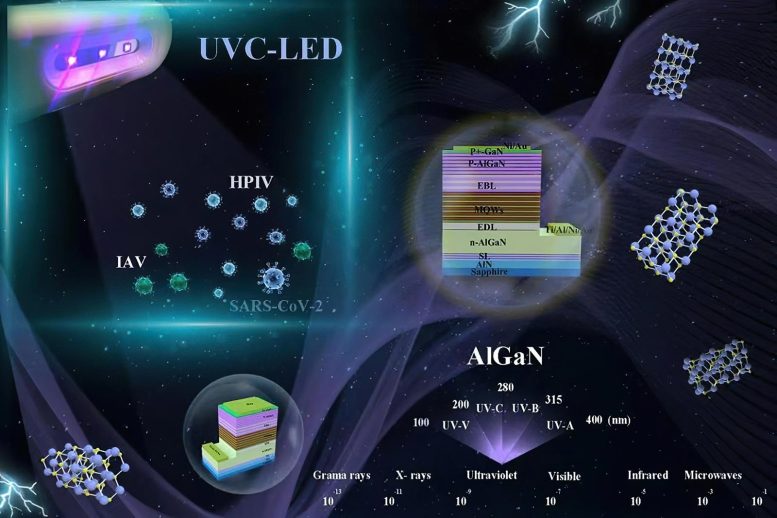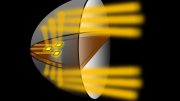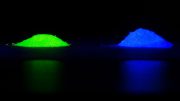
Operating wavelength, typical structure, and application in disinfection and sterilization field of AlGaN based DUV LED. Credit: OEA
A new publication from Opto-Electronic Advances discusses rapid inactivation of human respiratory RNA viruses by DUV LEDs.
The article explores the need for better disinfection methods for human respiratory RNA viruses, highlighting the limitations of mercury lamps. AlGaN-based DUV LEDs, which are environmentally friendly, compact, and energy-efficient, present a promising alternative. The research demonstrates that these LEDs, especially the 256 nm-LED, can achieve 100% disinfection and sterilization of SARS-CoV-2 and IAV in a short time. The results point towards DUV LEDs offering a more portable, environmentally friendly, and efficient virus disinfection method.
The Need for Improved Disinfection Methods
Human respiratory RNA viruses, such as SARS-CoV-2 (the virus that causes COVID-19) and influenza A virus (IAV), spread rapidly in the human population through airway transmission. These viruses have caused substantial morbidity, mortality, economic losses, and pandemic diseases worldwide. Consequently, it is essential to develop more efficient and broad-spectrum disinfection methods for surfaces and the environment to reduce the risk of human respiratory RNA virus transmission.
Traditional Disinfection Methods and Their Limitations
Deep ultraviolet (DUV) light irradiation is an effective method for virus inactivation, as it damages viral genomes. Conventionally, mercury lamps are used for virus disinfection. However, these lamps suffer from various disadvantages, including toxicity, fragility, bulkiness, short lifetime, and ozone production. Moreover, the Minamata Convention on Mercury has prohibited the manufacture, import, and export of products containing mercury since 2020. Hence, there is an urgent need for an eco-friendly and efficient germicidal alternative.
AlGaN-based DUV LEDs as an Alternative
A DUV LED based on Aluminium Gallium Nitride (AlGaN), whose wavelength is tunable from 365 to 210 nm, presents a promising alternative to mercury lamps. This solution offers the benefits of being pollution-free, compact, and energy-conserving. Typically, these AlGaN-based DUV LEDs are heteroepitaxially grown on an Aluminium Nitride (AlN)/Sapphire template, as AlN single-crystal substrates are too costly. The Hydride Vapor Phase Epitaxy (HVPE) Thermal Annealing (HTA) method seems the most promising for obtaining a high-quality AlN/Sapphire template due to its simplicity, efficiency, and stability. However, it’s important to manage the strong compressive stress (SCS) exhibited by the HTA AlN/Sapphire template, which can affect the AlGaN quality and complicate the device fabrication process.
Research Methodology and Results
The authors of this article carried out research on the stress engineering, device preparation, and the inactivation efficiency of human respiratory RNA viruses using AlGaN-based DUV LEDs. The researchers discovered that by inserting a superlattice structure between the SCS AlN/sapphire substrate and the AlGaN epitaxial layer, the SCS could be effectively alleviated. This intervention reduced the dislocation density of the AlGaN epitaxial layer by over an order of magnitude and achieved an atomic-level flat surface, improving the quality of the epitaxial LED interface. The research team prepared AlGaN-based DUV LEDs with different peak wavelengths and studied their disinfection and sterilization effects on various human respiratory RNA viruses.
The study results showed that all the tested LEDs could achieve 100% disinfection and sterilization of SARS-CoV-2 and IAV within 60 seconds at a virus concentration of 3.8×10^5 PFU/mL. In particular, the 256 nm-LED demonstrated superior disinfection and sterilization efficiency, achieving 100% inactivation in just 10 seconds. Furthermore, this LED also performed excellently under higher virus concentrations and different virus attachment surface environments. These findings suggest that DUV LEDs could disinfect viruses more portably, environmentally-friendly, broadly, and efficiently.
Reference: “Rapid inactivation of human respiratory RNA viruses by deep ultraviolet irradiation from light-emitting diodes on a high-temperature-annealed AlN/Sapphire template” by Ke Jiang, Simeng Liang, Xiaojuan Sun, Jianwei Ben, Liang Qu, Shanli Zhang, Yang Chen, Yucheng Zheng, Ke Lan, Dabing Li and Ke Xu, 15 June 2023, Opto-Electronic Advances.
DOI: 10.29026/oea.2023.230004
The research group of Li Dabing and Sun Xiaojuan from the State Key Laboratory of Luminescence and Applications, Changchun Institute of Optics, Precision Mechanics and Physics, Chinese Academy of Sciences, is mainly engaged in the research of wide band gap nitride semiconductor materials and their optoelectronic devices, involving materials and device physics, defect and doping control, structure epitaxy growth, LED and photodetector device preparation and application.
The research group has focused on the field of wide bandgap nitride semiconductors for more than 10 years. Currently, the research group has more than 10 full-time employees and more than 20 master’s and doctoral students. The research group has achieved multiple innovative results in high-quality AlN material preparation, nitride defect evolution mechanics, high-efficiency ultra-wide bandgap nitride p-type doping, and high-performance optoelectronic devices.
In recent years, The research group has published over 100 papers related to the above works in journals such as Adv. Mater., Light Sci. Appl., applied more than 80 domestic and foreign invention patents, presided over more than 10 projects such as the National Science Foundation’s Outstanding Young Scholars, Excellent Young Scholars, and Key R&D Programs of the Ministry of Science and Technology, and won first prize in natural science in Jilin Province.









Be the first to comment on "Rapid Inactivation of Human Respiratory RNA Viruses With DUV LEDs"